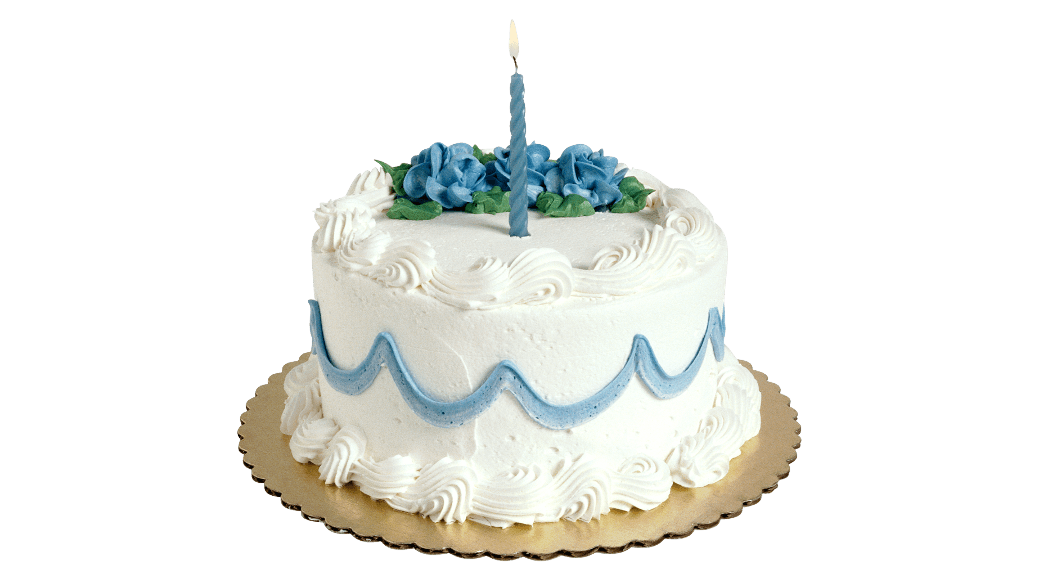Dave Orr (1859)
Gus Weyhing (1866)
Harry Steinfeldt (1877)
Paul Giel (1932)
Mike McCormick (1938)
Rich Reese (1941)
Steve Busby (1949)
John McLaren (1951)
Warren Cromartie (1953)
Byron McLaughlin (1955)
Tim Flannery (1957)
Craig Lefferts (1957)
Rob Deer (1960)
Derek Parks (1968)
Jake Westbrook (1977)
Heath Bell (1977)
Joe Thurston (1979)
Dave Orr is considered the greatest nineteenth century slugger of all. His career was cut short when he suffered a stroke in 1890 at the age of 31.
Outfielder Warren Cromartie was drafted by the Twins in the third round of the January Secondary draft in 1972, but did not sign.
Right-hander Paul Robert Giel was one of the original Minnesota Twins, appearing in 12 games for them in 1961. Born and raised in Winona, Minnesota, he attended the University of Minnesota and signed with the New York Giants as a “bonus baby” free agent in 1954. That status required him to remain in the majors for two years. He hardly played in the first year, but in the second he did not do too badly, going 4-4, 3.39 in 82.1 innings. He then spent two years in the military, returning to baseball in 1958. He made five AAA starts, then came up to the majors in early June. He did not pitch particularly well, however, and was placed on waivers in April of 1959. Pittsburgh claimed him, but after four bad outings sent him back to AAA, where he remained the rest of the season. He was a seldom used long reliever in 1960, doing a little better but still not all that well, and was again sent back to AAA at mid-season. He was sold to Minnesota in February of 1961 and began the year with the Twins. He appeared in 12 games, pitching well in four of them and decently in four more. In the remaining four, however, he allowed 19 runs (17 earned) on 14 hits and 5 walks in 3.1 innings. In June, he was essentially traded for himself: he was traded to Kansas City on June 1 with a player to be named later and Reno Bertoia for Bill Tuttle and a player to be named later. After one disastrous outing for Kansas City, he was chosen as the player to be named later and sent back to Minnesota (the Twins sent cash to complete their end of the trade). He does not appear to have pitched any more, however; his record as a Twin was 1-0, 9.78, 2.12 WHIP in 19.1 innings. He was probably better in football than he was in baseball: a two-time All American, he was the runner-up for the Heisman Trophy in 1953 and is a member of the College Football Hall of Fame. He later served as the athletic director at the University of Minnesota. Paul Giel passed away in Minneapolis on May 22, 2002 while in his car after attending a Twins game.
First baseman Richard Benjamin Reese played for the Twins from 1964-1973. He was born in Leipsic, Ohio, went to high school in Deshler, Ohio, and was signed by the Tigers as a free agent in 1962. In November of that year he was drafted by the Twins in the first-year draft. He had a good year with Class A Bismarck-Mandan in 1963, and another one with Class A Wilson in 1964, getting a September call-up in the latter season. Reese began 1965 with the Twins, but was used exclusively as a pinch-hitter/defensive replacement. He was sent back to AA Charlotte in mid-May after appearing in only 14 games and getting only 7 at-bats. The inactivity apparently hurt him, as he never did get things going that year, batting only .226. He bounced back in Denver the next year, hitting over a hundred points higher, and by 1967, he was in the big-leagues to stay. He still struggled to find playing time, however, as he was blocked at first base by some guy named Killebrew. In 1968, however, Harmon missed significant playing time with injuries, and Reese had his chance. He hit .259, which is better than it may sound: the batting champion only hit .301 that year. It was good enough to convince new manager Billy Martin to move Killebrew to third base in 1969, and play Reese at first. The move paid off, as Reese had his best year in the majors. He batted .322 with 16 homers and got a ninth-place vote in the MVP balloting. Reese came back to earth in 1970, however, and in 1971 slumped to .219. He was reduced to a part-time player in 1972, but his batting did not improve. Reese was purchased by the Tigers that November, but could not regain his form. Released by Detroit in August of 1973, the Twins re-signed him, but he was released after the season and his career was over. Long-time Twins fans may remember a grand slam Reese hit in 1969 off Dave McNally, ending McNally’s 17-game winning streak. He is tied for the record for most pinch-hit grand slams with three. As a Twin, Rich Reese hit .260/.318/.393 with 50 homers in 1918 at-bats. After his retirement, Reese went to work for James B. Beam Distilling Company, serving as company president from 1997-2006, when he retired to live in Scottsdale, Arizona. His daughter, Kristine, is a teaching professional at the Vision 54 golf school in Phoenix.
Right-hander Byron Scott McLaughlin did not play for the Twins, but was in spring training with them in 1981. He was born in Van Nuys, California, went to high school in Santa Monica, California, and signed with Montreal as a free agent in 1973. He apparently was in extended spring training or something, but was released in June of 1974 without appearing in a minor league game. He was out of baseball the rest of that year, but signed with Baltimore for 1975, He struggled in a year split between rookie ball and Class A and was released in March of 1976. He had an outstanding 1976 in the independent Gulf States League, going 10-4, 3.05 in 15 games, and signed with Seattle in January of 1977. He was loaned to the Mexican League that season, but returned to make one appearance for the Mariners in September. He was in the majors most of 1978, making 17 starts. 1979 was his first full year in the majors and it was his best year, as he went 7-7, 4.22 with 14 saves over 123.2 innings. In 1980 he slumped to a 6.85 ERA and a 1.92 WHIP in 90.2 innings, and in December he was traded to Minnesota for Willie Norwood. He failed to make the staff, which on the 1981 Twins took some doing, and went back to Mexico. The Angels purchased him in August of 1982, and he made it back to the majors in early June of 1983. He was a long reliever and spot starter the rest of the season, going 2-4, 5.17 in 55.2 innings. His playing career ended after that. While in Mexico, he apparently made some interesting connections, because after his playing career ended he made a deal with some Korean companies to manufacture cheap counterfeit sneakers for the Mexican market. He eventually pled guilty to money laundering, but fled the country and was reported living near Cannes, but more recently has been reported to have gone back to Mexico in the Tijuana area.
Catcher Derek Gavin Parks played for the Twins from 1992-1994. He was born in Covina, California and was drafted by Minnesota with the tenth pick of the 1986 draft. He hit 24 home runs for Class A Kenosha in 1987 and was considered a top catching prospect. Injuries and poor batting limited his playing time the next three seasons. Finally, in 1992, he got healthy again and batted .245 with 12 home runs for AAA Portland. He got a September call-up that year, and when he hit .311 with 17 homers for Portland in 1993, he appeared to be on his way. It did not work out that way. Parks spent all of 1994 with the Twins, but couldn’t beat out Matt Walbeck. He played in only 31 games, hitting .191 in only 89 at-bats. The Twins apparently soured on him quickly, as they let him go after the season. No one picked him up, and Derek Parks’ playing career was over. For his career, Derek Parks hit .200/.258/.378 in 115 at-bats, all with Minnesota. No information about Derek Parks’ life after he was an active player was readily available.
Infielder Joseph William Thurston did not play for the Twins but was in AAA for them in 2012. He was born in Fairfield, California, went to high school in Vallejo, California, attended Sacramento City College, and was drafted by the Dodgers in the fourth round in 1999. He was decent, but not much more than that, in his early minor league career, but had a strong year in AAA in 2002 and got a September call-up. He got September call-ups in 2003 and 2004 as well, but could not get more than that other than a few weeks in May in 2004. He was traded to the Yankees in late July of 2005 and then became a baseball nomad. He was with the Phillies in 2006, signed with Washington for 2007, was released late in spring training, went back to the Phillies, signed with Boston for 2008, went to the Cardinals in 2009, to Atlanta for 2010, and to Florida for 2011. He signed with Houston for 2012, got released late in spring training, signed with Philadelphia, was released in late April, and signed with Minnesota on April 25, 2012. He spent most of that time in AAA, getting brief shots in the majors in 2006, 2008 and 2011. The one time he got extended big league time was 2009, his only full season in the majors. He appeared in 124 games that season, half of them as a defensive replacement, and hit .225. The Twins sent him to Rochester in 2012, where he went 4-for-43 and was released again after about three weeks. His story was far from over, though. He played in the Atlantic League and in Mexico in 2013, signed with Milwaukee for 2014, was again released late in spring training, played in the Mexican League, played winter ball, and signed with Boston for 2015. He did not make the team, however, and became a coach for the Red Sox' AA affiliate, the Portland Sea Dogs. He coached for Billings in the Cincinnati system in 2016 and moved on to become the batting coach for the Modesto Nuts in the Seattle chain in 2017.

